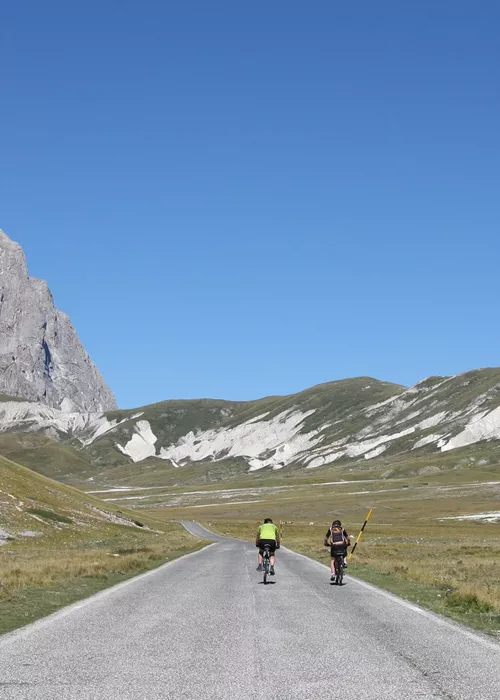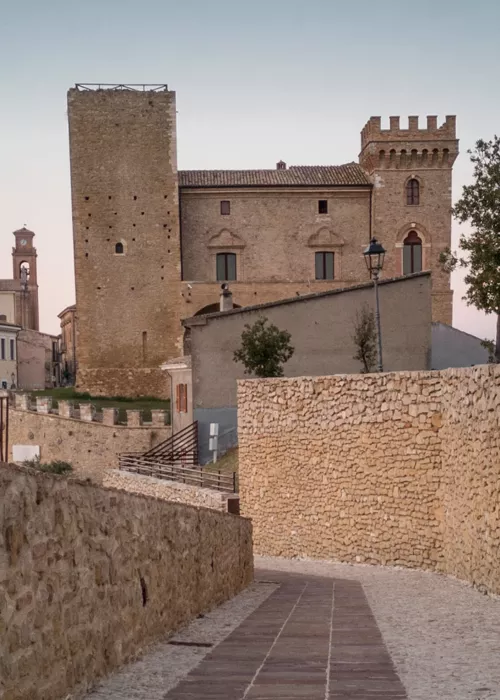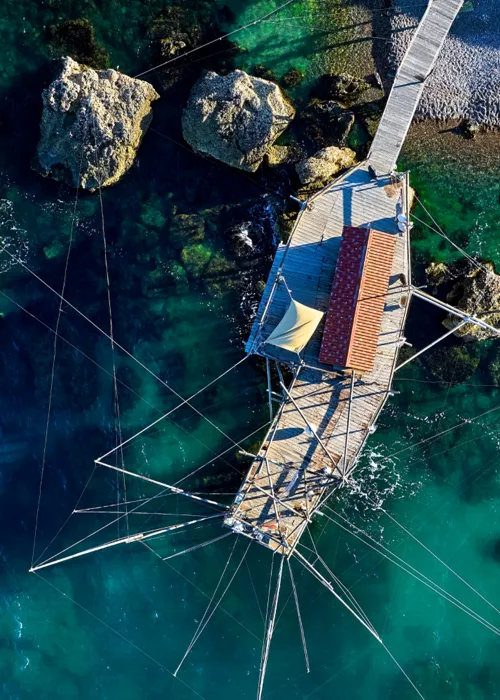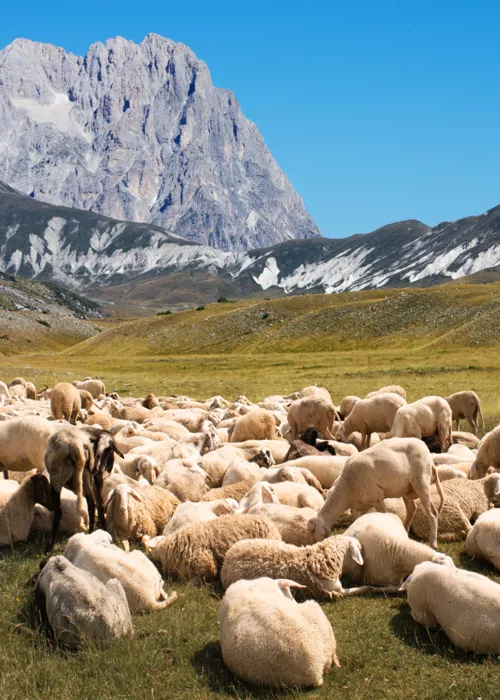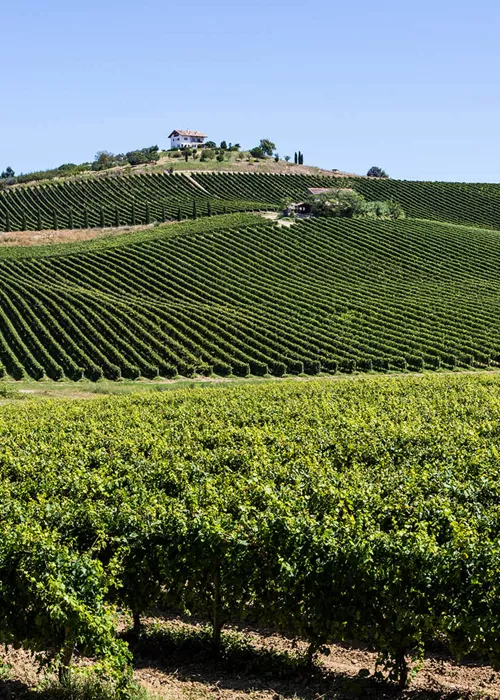Avezzano: the heart of the Marsica

Our itinerary begins in Avezzano, the most populated and extensive urban centre in the Marsica region. Evidence of human presence in this area dates to the Lower Palaeolithic. Destroyed by an earthquake in 1915 and bombed several times during World War II, the town was largely rebuilt.
You can cycle through the streets of Avezzano, which made a name for itself in cycling thanks to Vito Taccone, nicknamed “Camoscio d’Abruzzo”, winner of the Giro di Lombardia and of the Pink Jersey at the Giro d’Italia on multiple occasions. Along the way, you come across numerous monuments and religious architecture. Don’t miss the Tunnels of Claudius at Case Incile, a long underground canal built by Emperor Claudius between 41 and 52 AD. Until 1871, the year of the inauguration of the Fréjus Rail Tunnel linking France to Italy, they were the longest tunnels in the world.
Pescina: home of cardinals and politicians

The route continues towards two places marked by the passage of Saint Francis of Assisi: San Benedetto dei Marsi and Pescina. In the latter, the miracle of the healing of an Abruzzo-born man was attributed to the Saint. Saint Francis stayed in Pescina for four months, during which time he began the construction of what is now known as the Pontifical Basilica of Saint Anthony of Padua: you can see the mark left by the saint’s visit in the right-hand column of the fine Romanesque-Gothic portal, in which a cross is engraved in the stone.
Two other notable personalities were also born in Pescina: Cardinal Giulio Mazzarino, successor to Richelieu during the reign of Louis XIV, and writer, journalist and politician Ignazio Silone. You can visit the two respective museums dedicated to them, before staying overnight.
Antwerp: the land of Escher

You set off from Pescina, heading for Cocullo. If you are lucky enough to visit on 1st May, you will witness the unique Festival of the snake-catchers: a group of snakes adorn the statue of Saint Dominic, protector from snake bites, which believers can touch to help overcome their fears.
After Cocullo is Anversa degli Abruzzi: here, in 1929, Maurits Cornelis Escher arrived from Holland and soon became a famous artist, who made the hamlet of Castrovalva his home. The last hairpin bend you face before entering the village is dedicated to him - the same stretch of road portrayed in the lithograph made by the Dutch engraver.
Rionero Sannitico: the ascent of Girardengo

Now you must tackle the most challenging climb of the entire route: after a fast descent from Anversa to Sulmona, there are 39 kilometres to Pescocostanzo.
The first stop is in Pacentro, 690 metres above sea level, to enter the Majella National Park. This is followed by a further climb to Campo di Giove. Along the Sulmona-Isernia route, be sure to stop by the “Transiberiana d’Italia”, the station of Palena, Italy’s third highest railway. It closed its passenger service in 2011 and became a tourist line, called the Ferrovia dei Parchi.
You will then continue cycling to Pescocostanzo, the village of bobbin lace, in the province of L’Aquila, at an altitude of 1,395 metres. You pass through Roccaraso, a stage of the Giro d’Italia since 1952, then down towards Castel di Sangro: in the hamlet of Roccacinquemiglia, you can admire the walls of the Benedictine Monastery, now in ruins.
You have made it to the finish line! You will arrive in Rionero Sannitico, where a major attraction for all cycling enthusiasts begins: the Valico del Macerone climb, the same one that saw the legendary Girardengo, in a stage of the Giro d’Italia in 1921, get off his bike exhausted and give up, after having drawn a cross in the dirt ground.



